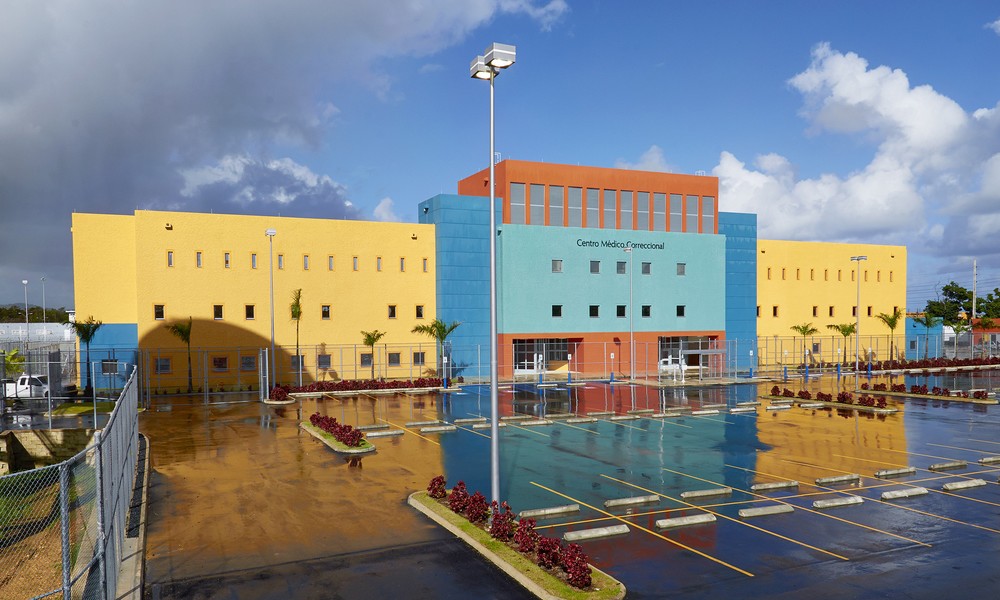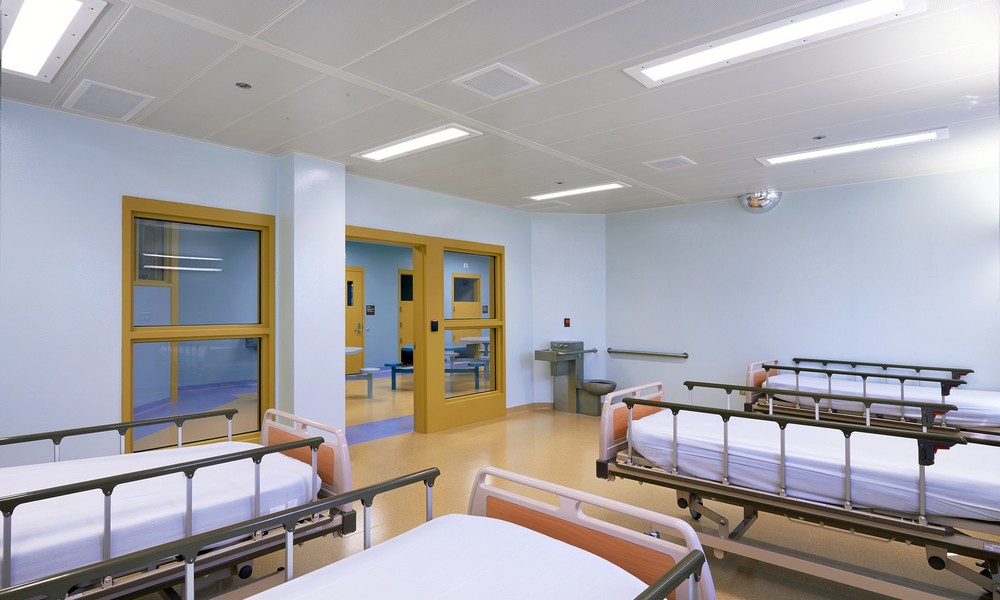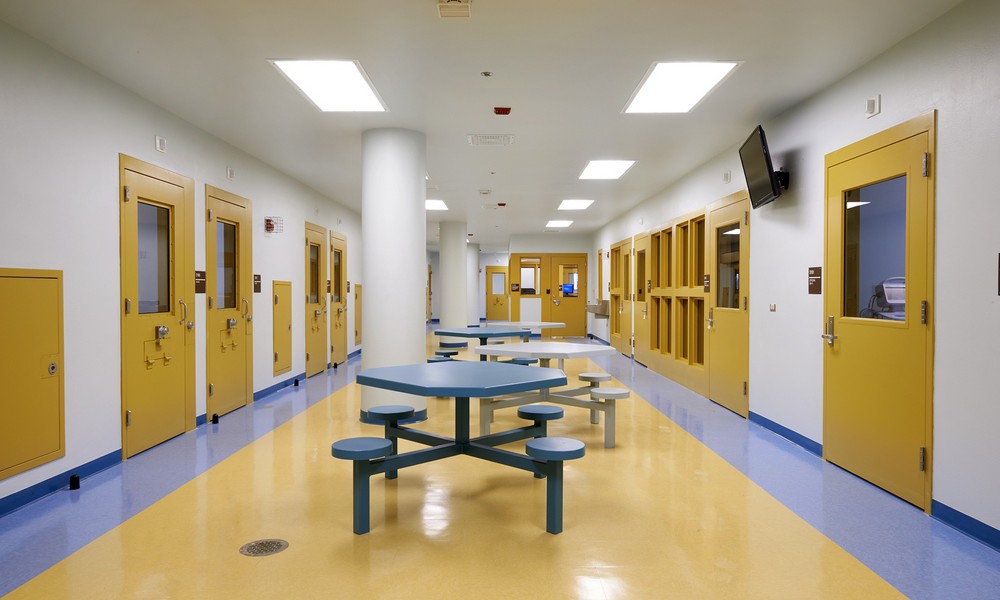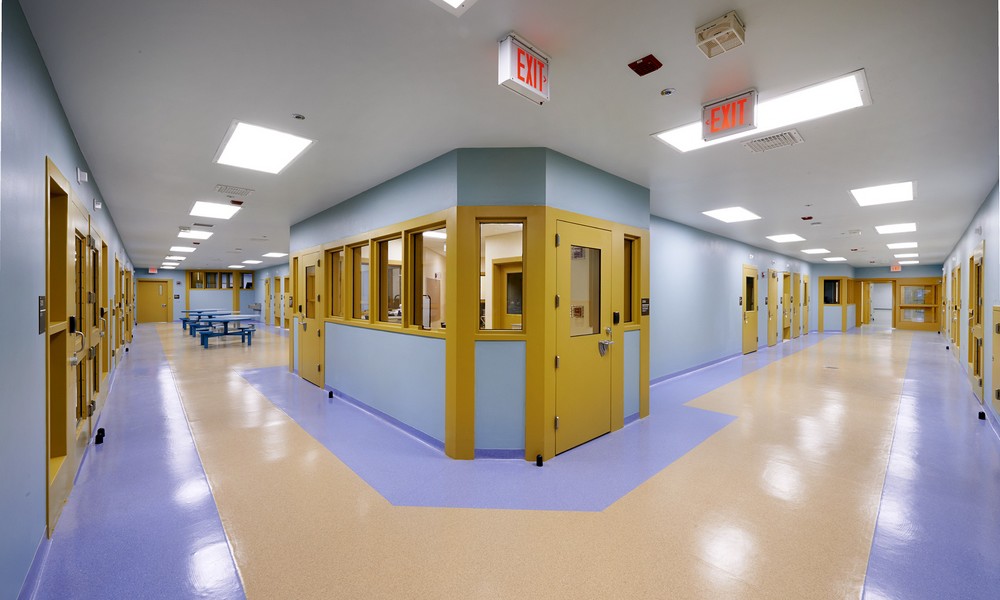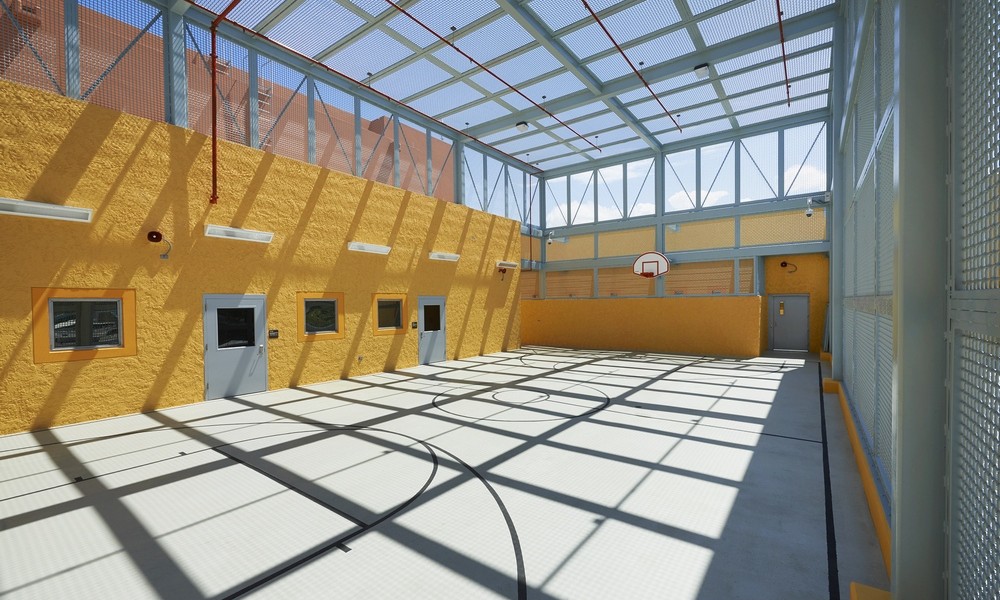Subscribe Now
Urbahn Architects, DS+C Project Wins HFSE Distinction Team Award
NEW YORK, N. Y. –The New York City architectural and planning firm of Urbahn Architects has completed Centro Médico Correccional in Bayamón, Puerto Rico and the project has received the Distinction Team Award from the 2015 Healthcare Facilities Symposium & Expo. The awards competition honors design teams and individuals who have made a profound contribution to the healthcare design industry. Urbahn served the Puerto Rico Corrections and Rehabilitations Department as lead design architect in collaboration with Puerto Rico’s DS+C Architects + Engineers.
“While the 139,000-square-foot medical center sits in Bayamón’s Regional Prison, the 200-bed structure serves the inmates of all of the island’s 44 correctional facilities. With a price tag of $68 million, it came in a full 15 percent under budget,” said Donald E. Henry, Jr., AIA, LEED AP, Urbahn’s principal.
The team performed a careful programming, master planning, space planning and design analysis to strike the optimal balance between the correctional and healthcare functions within the facility. “We had to abide by federal mandates regarding outdoor views and recreational space, all without compromising security. We also strived to provide a humane environment and appropriate medical care to a chronically underserved population, while creating strong and uplifting architecture,” added Henry. Indeed, the building has become something of a landmark that is visible from the highly traveled PR-22 Expreso José De Diego. “It is a bright and colorful structure that evokes an aura of wellness rather than a forbidding hallmark of incarceration,” he said.
Urbahn and DS+C teamed with the program manager Rosser International; general contractor Q.B. Construction; correctional operations consultant Curnyn Consulting; healthcare consultant P4H; mechanical engineer Babilonia Engineering Group; security electronics engineer Cameron Engineering & Associates; structural engineer José Espinal Vazquez Y Asociados; civil engineer EBP Design Group Consulting Engineers and electrical engineer Andrés Sánchez Carrión.
Design Challenges and Solutions
In prison healthcare facilities, security concerns and medical best practices tend to be at odds, so careful creativity and collaboration was a necessity. HIPAA, for example, demands privacy, yet in correctional facilities privacy contradicts security. Thus, Urbahn worked closely with the consultants and drew on its own extensive correctional and healthcare design experience to specify equipment and details that would satisfy all requirements. In fact, Urbahn developed the Medical Equipment Reference Book for the U.S. Federal Bureau of Prisons, the specification guidelines for medical equipment in federal correctional facilities.
The solutions included proper layout planning, equipment choices and construction and engineering methods. For example, the medical equipment had to have no sharp edges and few moving parts that could be broken off and used as weapons. Also, both healthcare providers and prison officers must be able to see patients at all times, but from a secure environment. However, because correctional officers are not allowed to see medical records of any inmate, Urbahn designed the nurse’s station and officer’s stations in a similar manner, but in separate locations, so privacy of files can be maintained.
Some conventional finishes could not be used in high-security areas; for example, vinyl tiles at other correctional institutions have been removed from the floor by inmates and sharpened into “shivs” or rudimentary knives. In addition, the client was an early adopter of electronic medical records (one of the first correctional users in the United States) and wireless communications in order to ensure security. The project team incorporated all of these innovative systems into the design.
The team recognized the differences in Puerto Rican building practices and methods and integrated those into the design. For example, Puerto Rican construction uses minimal amounts of structural steel, as it all must be imported, which is expensive. Instead, a more typical concrete structural system was specified. Also, the team adjusted the masonry partition design to accommodate the differences in Puerto Rican concrete construction practices, which use a stack bond method instead of the running bond pattern used in mainland U.S.
The Structure
The CMC is a stucco-clad, three-story concrete building that fits within the island’s design aesthetic. The site includes a hardened perimeter, extensive electronic monitoring and locking and sally ports for both vehicles and individuals at building entrances and unit entries within the building itself. Site planning and access was critical. The team made sure to keep paths of circulation separate for staff and visitors versus inmates.
A reinforced-concrete structure was specified using local construction methods, without using structure steel frame components. To build a security wall, stucco was specified on the outside, with vertical reinforcing bars through cores of masonry block embedded in the ceilings and floors.
The facility is situated in the Bayamón River basin, with low-bearing soil, so the engineering team designed a foundation system that incorporates 850 70-foot-deep DeWaal cast-in-place concrete piles. A concrete-framed ground slab is supported on pile caps. Both the bearing stair tower walls and exterior walls are cast-in-place concrete. The floors are flat plate concrete design without metal decking (again, due to the need to eliminate costly imported components). All windows are secure with steel security bars and the building is fully air-conditioned. Larger-sized windows were used on the first floor in the outpatient clinic. The infirmaries have smaller windows and, on the third floor – the highest-security area – the windows are narrow. The modified-bitumen roof is hurricane resistant.
A state-of-the-art central security system with touch-screen technology was developed. The team added a generator plant, long-term diesel fuel storage and a UPS battery backup in case of a hurricane.
The site work within the CMC project included surface parking for 200 vehicles, roadways, security perimeter fencing, landscaping, a service yard, a cistern for long-term water storage and a robust stormwater detention system with 25,507 cubic feet of storage capacity.
The Interior
The ground floor contains intake and holding, medical triage, urgent care and outpatient exam areas; a full range of diagnostic and treatment departments, which include pharmacy, dental, imaging and optometry/ophthalmology and a physical therapy suite. The imaging center houses sonogram, X-ray and CAT scan equipment. In the center of the floor plan is the inmate intake/discharge unit with holding cells for patients awaiting or leaving medical care.
The 100-bed surgical unit on the second floor includes both dormitory-style and segregated, single-occupancy cells. The third floor comprises a 100-bed inpatient psychiatric department, including a crisis intervention unit. Both floors are laid out in such a way that the floor plate is divided in half and each half has two housing units for 25 patients each.
The nursing stations are located at the corner of a V-shaped corridor, so the nurses can observe all patients at all times from inside the station. In addition, they can retreat back into the nurses’ stations and lock the doors in case of an emergency, and even retreat further into secure storage rooms should the necessity arise. Furthermore, stations are internally connected to the secure central stairway, which provides a means of emergency evacuation for medical staff and access for security officers.
A central outdoor recreation area for inmates is located on both the second and third floors between housing units. Waterproof athletic surfacing was used on top of concrete. On the second floor, there are different sized rooms (four-, two- and one-bed units) all facing the dayroom. This floor also houses quarantine units with a HEPA filter and an air-lock system. The third floor is similarly laid out but all rooms are designed for single occupancy.
The finishes include vinyl tile or seamless medical flooring, depending on the space, painted concrete walls and ceilings vary from painted gypsum board to steel security ceilings, to acoustical tile in the administrative areas. Lighting fixtures are standard commercial-grade fluorescents in the administrative areas and, in the secure areas, high-security fluorescent fixtures. The entire building is fire-sprinkler equipped. All building system components in secure areas are sealed tight and tamper resistant. Secure stainless steel plumbing fixtures were used and the plumbing chases were designed so that components can be switched out quickly. The project team even specified places for overflow to go in case inmates stuff the toilets.
Photos courtesy of Urbahn Architects.
Tags: Architecture, Awards, Distinction Team Award, HFSE
Posted January 12, 2016
More Articles:
- Winners Announced for Healthcare Facilities Symposium and Expo Distinction Awards
- More Details Announced for Healthcare Facilities Symposium and Expo
- Mayo West Tower Project Wins Cold-Formed Steel Engineers Institute Award
- Facility Tour Program Announced for 2023 Healthcare Facilities Symposium & Expo
- Coverings 2024
Apr 22, 2024 – Apr 25, 2024 - Hospital, Outpatient Facilities & Medical Office Buildings Summit
Apr 25, 2024 – Apr 25, 2024 - CxA Workshop & Exam
Apr 29, 2024 – Apr 30, 2024 - EMP Seminar & Exam at CxEnergy 2024
Apr 29, 2024 – Apr 30, 2024 - CxEnergy
Apr 29, 2024 – May 2, 2024 - PHCC West 2024
Apr 29, 2024 – May 2, 2024 - Lean in Design Forum 2024
May 1, 2024 – May 2, 2024


